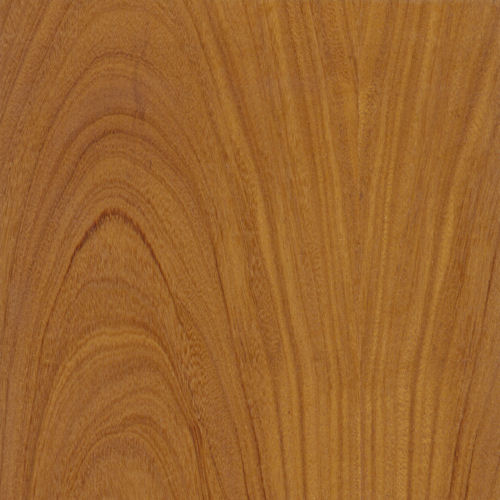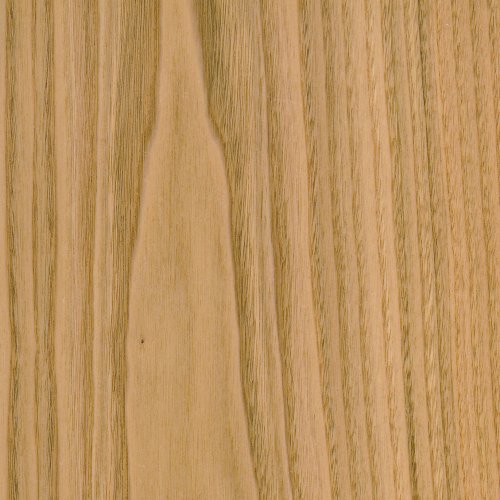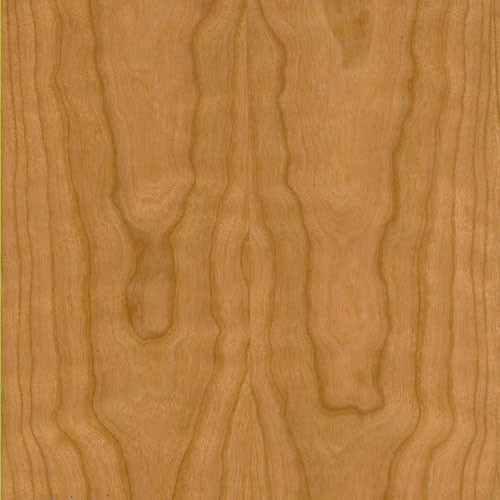Afromosia
[Pericopsis elata]
Sometimes spelled “Afrormosia,” this exotic West African hardwood not only bears a striking resemblance to Teak, it also shares similar working and mechanical properties to the Tectona grandis species. So, despite not being even closely related to genuine Teak, Afromosia is sometimes referred to as “African Teak.” And even more frequently, it’s successfully used as a more price-conscious substitute for Teak.
Afromosia is known for a beautiful, overall color that ranges from yellow gold to a warm brown. And while its heartwood has an occassional reddish or olive hue — which tends to darken to a deep, rich walnut color over time — its clearly demarcated, narrow sapwood is typically a pale yellow. The grain of Afromosia is usually straight, though can be interlocked, and it has a fine, uniform texture and good luster.
A first-class wood for veneer, flooring, furniture, and boatbuilding, Afromosia has been a longtime favorite in Europe for high-grade commercial and residential construction.
Species Distribution:
West Africa
Cameroon
Republic of Congo
DRC
Ghana
Nigeria
Ivory Coast
Common / Alternative Names:
Afrormosia
African Teak
Kokrodua
Assamela
Janka Hardness:
1,570 lbf
Sustainability Status:
CITES Appendices: Listed in CITES Appendix II
IUCN Red List of Threatened Species: Listed on the IUCN Red List. It is listed as endangered due to a population reduction of over 50% in the past three generations, caused by a decline in its natural range, and exploitation.
Related Species:
Pericopsis (Pericopsis mooniana)










